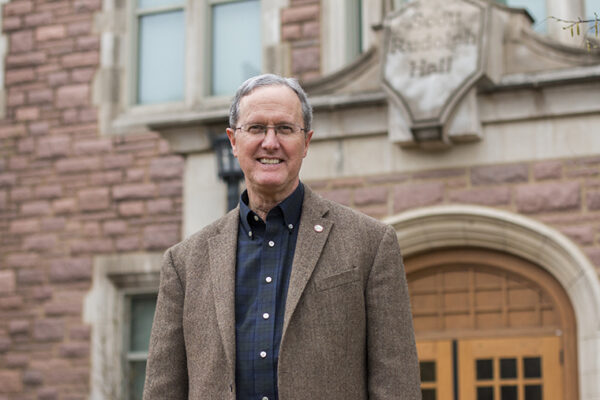From 2000–09, I had the deep pleasure of teaching a course for non-science majors, called “The Epic of Evolution,” with professors Claude Bernard (physics) and Michael Wysession (Earth and planetary sciences) and with the enthusiastic support of two beloved deans, James McLeod and Sharon Stahl.
The lectures covered the 13.8 billion-year evolution of the universe (Claude), the 4.6 billion-year evolution of the Earth (Michael), and the ~3.5 billion-year evolution of life (me) — our goal being to integrate the three and move beyond the silos of the required physics or biology courses that our students had taken, and often simply endured, during high school. We adopted the narrative mode suggested by the word “epic,” sharing our wonder and enchantment as the story unfolds.
Since the course partially fulfilled the three-semester WashU science requirement for graduation, our lectures and tests were fully science-based, but we also had a weekly assignment, called “narratives,” wherein students were asked to submit their responses to the material from a personal perspective in prose, poetry or some form of visual art. And what a windfall it was! There were often-poignant reflections on ways to assimilate these understandings with pre-existing religious or philosophical frameworks. There were elegant takes on the epic in odes and haiku, in watercolor and collage. There were clever cartoons and whimsical skits. No question: Evaluating these assignments were the most enjoyable and enlightening grading experiences of my teaching career.

The Sacred Depths of Nature
How Life Has Emerged and Evolved (second edition)
The course concept emerged from a book that I had published in 1998 called The Sacred Depths of Nature, which had resonated with both Claude and Michael. In the book, I presented the epic of evolution, focused largely on biology, and then offered, at the end of each chapter, a personal reflection on the chapter’s content. These reflections were voiced in a spiritual mode, including responses such as awe, wonder, gratitude, reverence, assent and joy — a voice suggested but by no means mandated in the narrative assignments.
The goal of the book was the same as our WashU course: to help the reader, assumed to be not well-versed in and perhaps even resistant to science-based concepts, engage in an accessible version of the epic and ponder its meanings and implications.
A second edition of the book, now called The Sacred Depths of Nature: How Life Has Emerged and Evolved (publishers these days like sub-headings!), was published a few months ago. It has been expanded and deepened by 25 years of reading and conversation, including the many perspectives offered in the narrative assignments, and reader responses have been very gratifying.
During those years, the notion held by a few of us — that the “epic of evolution” is in fact everybody’s story and merits existential, spiritual and moral reflection — has been consolidated into what we are calling a religious naturalist (RN) orientation. Importantly, the RN perspective is beautifully tailored to ground social-justice and eco-moral perspectives, perspectives urgently needed in our fragile moment.


